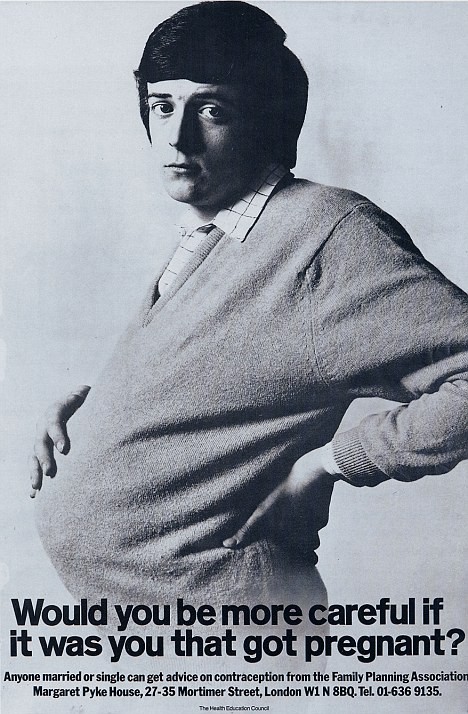“The ad made headlines all over the world when it came out. It was such a bombshell, one of the most controversial ads ever. There were questions in Parliament about the propriety of running such an ad, especially in the government’s name. It made a furore all around advertising and beyond, all over the world.
The client was delighted, even more so after it had made such a fuss, because that put it on the map. I hope it did some good. It’s weird to me that it’s made such an impact and still makes an impact. Because in photographic terms, what is it? A picture of a bloke. I find it pretty baffling really.”
Alan Brooking was the photographer of “Pregnant man”
How do you get the pregnant man from a proposition that says “Be more careful about getting your girlfriend pregnant”?
Answer: Start with every related idea around pregnancy. Especially the ones that are so obvious you no longer see them.
Especially the rule that says men don’t get pregnant. Turn this upside down.
Then exaggerate it so they get very pregnant – just like a woman close to term.
Finally, make it look the most normal thing in the world. To sum up: Start with a trope, invert it, exaggerate and normalise.
When the above process is done, you’ve created a symmetry across the impossible. On one hand your brain sees the logic of it and on the other it fights the impossibility. The power of the communication comes from this.
In another example of creating ideas by creating symmetries is shown in the following idea for Robinson’s Barley Water. This is a sketch of the ad.
The idea starts with mapping out the form of a tennis ball on an orange and then normalizing it. The visual is such so closely symmetric you hardly notice the orange dimples on the tennis ball.
Henry Ford and the car cow symmetry
Predictive text and symmetry with opposite
Jet engine and mushroom symmetry
Banksy and inversion of value sets





